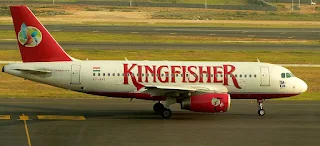The methodology of reforms introduced in India in July 1991 introduced a combination of macroeconomic adjustment and structural adjustment. It was directed by short term targets and long haul targets.
Adjustments were important
in the short run to re-establish balance of payments and to control inflation.
Simultaneously, changing the design of institutions themselves through reforms
was equally significant according to long haul perspective.
The new government moved earnestly to carry out a program of macroeconomic adjustment through fiscal correction. Other than this, underlying changes were started in the field of trade, industry and the public area.
Impact of pre and post industrial policies on Aviation Industry
Impact of Pre 1991 industrial policies on Aviation
According to tradechakra, Aviation Industry in India started in 1912 when the
first flight took off from Karachi to Delhi.
Indian State Air Services initiated this industry, in partnership with
Imperial Airways UK. But the real initiation for Aviation Industry In India was
in 1932 when Mr. JRD Tata started Tata Airline. In 1946 Tata Airlines was
renamed as Air India.
Nine air transport companies transporting both cargo and passenger traffic
belonged to India after the Independence. All the existing airline assets were
nationalized by the Indian Government in 1953.
The main move towards Liberalization was started in 1986 when private aircrafts were allowed to begin charter and non- booked administrations to all approved air terminals under the Air Taxi Scheme.
They were likewise allowed to settle on their own choices
regarding fares and schedules. A significant stage towards Liberalization
was in 1990 when India started an open sky strategy for freight which gave
authorization to foreign aircrafts to run freight trips without limitations and
to charge rate without being constrained by Director General of Civil Aviation
(DGCA).
Catering domestic market was assigned to Indian Airline and
International sector was looked after by Air India. Indian Airline and Air
India both enjoyed monopoly over the Indian skies. However, like any other
industry, this industry also suffered from certain limitations pre 1991
industrial policies.
The services provided was poor, there was frequent delay in flights and travelers had to face innumerous hardships frequently. But the scenario changed post 1991 policies.
Impact of Post 1991 industrial policies on Aviation
Post 1991 , after the introduction of new industrial policies, unprecedented growth for both domestic and foreign passenger sector was witnessed by aviation industry. According to tradechakra, “ the monopoly of Indian Airlines and Air India over the Indian skies came to an end”. The substantial growth in the Aviation industry post 1991 was due to:
- The entry of private players, increased competition ensured better services were provided to the customer.
- The landscape of the aviation industry changed by the entry of low-cost carriers like Deccan, Spice jet, Go Air. According to tradechakra “the no off first time fliers in both urban and rural India increased dramatically”.
In 1994 Air Corporation act was passed. With the introduction of the act, private service organizations could now perform both booked and non-planned administrations in the domestic sector with no restrictions on the size or type of airplane.
However, to ensure traveler's wellbeing,
security etc, legitimate development of air transport benefits and defeating
infrastructural imperatives in numerous air terminals were required. Government
gave authorization for expansion to capacity depending on increase in air
traffic gauge.
In 1994-95, government allowed
straightforwardly to import aeronautics turbine fuel (ATF). In 1997-98 to take
the course of liberalization above and beyond, foreign equity participation and
cooperation up to 40 percent (100
percent for NRI's) was permitted in the domestic airline segment. Yet,
International service providers couldn't take stakes either straightforwardly
or by implication without endorsement from DGCA.
Government Initiative To Promote Aviation Industry :
• FDI
in Air Transport Services (Domestic Airlines) has gone up from 40% to 49
percent. NRI's and Persons Of Indian Origin (PIO) have been permitted 100 %
FDI.
• Private
Service suppliers with five years' involvement with homegrown area and having fleet
size of twenty airplanes were offered permit to work in International routes. Jet
Airways and Kingfisher aircrafts have begun to operate in International
destinations.
• The
airplane rules were modified to guarantee and ensure that the Aviation business
stays up with international norms and improvements.
• Air
India and Indian Airlines were converged to make them more proficient.
• Greenfield
air terminals at Bangalore and Hyderabad were finished and Delhi and Mumbai air
terminals were rebuilt.
Passage Of Low Cost Carriers (LCC)
The LCC development in India was as Low Price Tags, Apex Fares, Internet Auctions, Bulk Purchases and Last Day Fares. The justification for the development of LCC is:
. Low Entry Barrier
• Attraction
Of Foreign Shores
• Increased
Permitted Foreign Equity
• Rising
Income Levels And Demographic Profile.
• High
load proficiency.
• Operations
to remote areas.
• Low
cost and Low Frill plan of action.
• Staff
strength was kept to a base(minimum).
• Operations
to adjoining nations like Sri Lanka.
• Successfully
infiltrating the rising working class and first time fliers.
Forecasts which were made during that period:
• The
Center For Asia Pacific Aviation (CAPA) has anticipated that homegrown traffic
will increment by 25 to 30 percent till 2010 and International traffic
development by 15% by 2010.
• By
2020, 400 million Indian travelers are probably going to be flying and Indian
air terminals would deal with in excess of 100 million travelers.
• The
Aviation industry must be made prepared regarding foreign carriers particularly from the Middle East. The
profitability of the aircraft operators in India were eroded due to global
meltdown and decrease in air travel caused by terrorist activities.














0 Comments